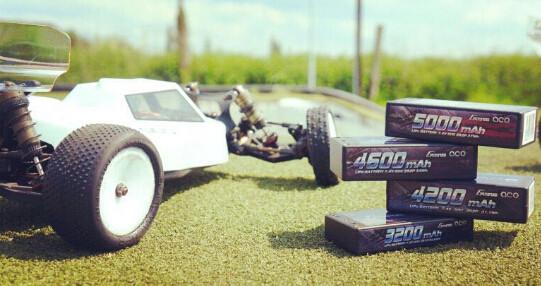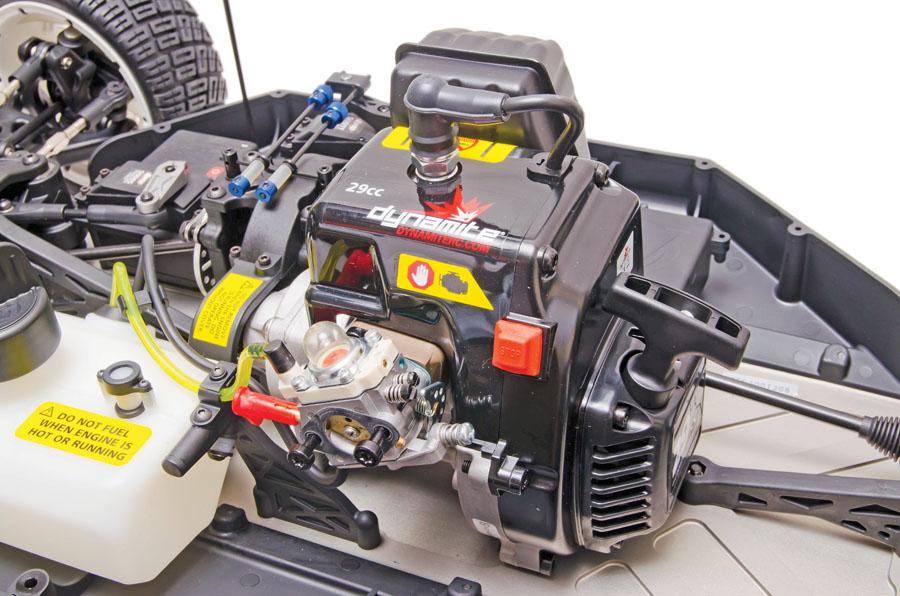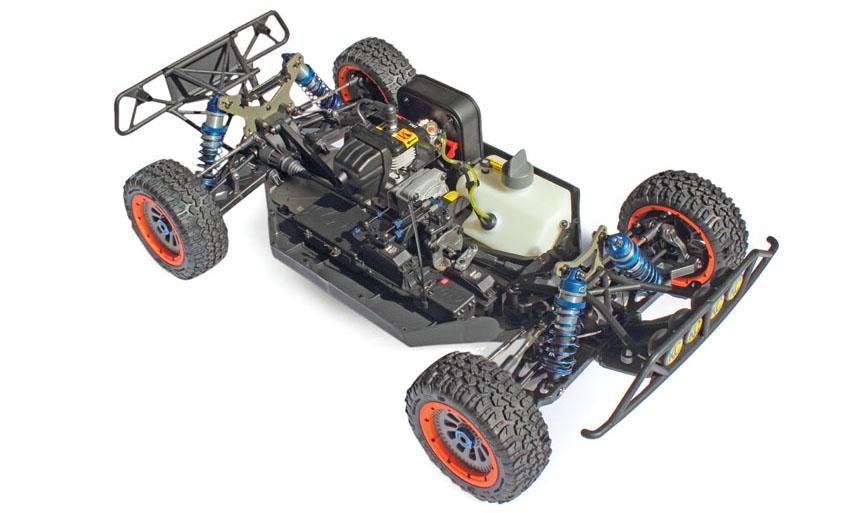Gas-Powered Remote Control Cars: Features, Maintenance & Models
Gas-powered remote control cars are a popular type of toy for kids and adults alike, offering high speed and power compared to their electric counterparts. These cars use a gasoline-powered engine to operate and come with a variety of different components, including the engine, transmission, and fuel tank. Similar to regular cars, the engine in a gas-powered remote control car uses gasoline to power the engine and must be refueled periodically to keep it running. The transmission system controls the speed and acceleration, while the suspension helps the car handle different types of terrain and obstacles.
Gas-powered engine essentials
– The engine in a gas-powered remote control car operates like a small version of a real car engine.
– The engine can be 2-stroke or 4-stroke, which affects the power and speed of the car.
– Gasoline is used to power the engine and must be mixed with oil before being added to the fuel tank.
– Regular maintenance is necessary to keep the engine in good condition, including cleaning and lubrication.
– Some popular gas-powered remote control car models include the Traxxas Nitro Slash, Redcat Racing Rampage XT, and HPI Racing Savage X 4.6.
– Websites such as Amazon and eBay offer a wide variety of gas-powered remote control car models to choose from.

What is the difference between a 2-stroke and a 4-stroke engine in a gas-powered remote control car?
The main difference between a 2-stroke and a 4-stroke engine in a gas-powered remote control car is the number of cycles necessary to complete the combustion process; a 2-stroke engine completes it in one cycle while a 4-stroke engine requires four.
Gas-Powered RC Cars: Transmission and Suspension Systems Explained
– Gas-powered remote control cars often use a two-speed transmission system to control speed and acceleration.
– The transmission system is also responsible for distributing power to the wheels.
– A higher number of gears typically means higher speed but lower acceleration.
- Two-speed transmissions are common in gas-powered remote control cars.
- Transmission system may come as belt-driven or shaft-driven.
- The number of gears affects the car’s acceleration and speed.
– The suspension in a gas-powered remote control car affects how well the car handles different types of terrain and obstacles.
– Different types of suspension systems include spring-based, air-based, and oil-filled.
– Suspension is also responsible for absorbing shock from jumps and rough terrain.
- There are three types of suspension systems: spring-based, air-based, and oil-filled.
- Suspension affects how well the car handles different terrain types.
- Suspension also absorbs shock from jumps and rough terrain.

What are the different types of suspension systems in gas-powered remote control cars?
There are four main types of suspension systems in gas-powered remote control cars: independent, solid axle, four-link, and trailing arm.
Tips for Maintaining and Operating Gas-Powered RC Cars
– Maintaining a gas-powered remote control car is important to keep it running smoothly.
– Regular cleaning and lubrication can extend the life of the car’s components.
– Store the car properly, ensuring it is not exposed to moisture or extreme temperatures.
- Regular cleaning and lubrication can extend the life of gas-powered remote control cars.
- Store gas-powered remote control cars in a dry and cool place to avoid damage.
- Avoid driving gas-powered remote control cars in wet conditions or on excessively hot days.
– Safety is important when operating any type of remote control car.
– Wear protective gear such as gloves and eye protection when handling the car or fuel.
– Never operate the car near other people, animals, or property that could be damaged.
- Wear gloves and eye protection when handling gas-powered remote control cars or fuel to protect your hands and face from harmful chemicals or sharp pieces.
- Never operate gas-powered remote control cars near people, animals, or property that could be damaged.
- Always follow the manufacturer’s instructions for operating gas-powered remote control cars.
– Websites like Amazon and HobbyTron offer a wide range of gas-powered remote control cars and accessories.
– Prices range from under $50 for entry-level models to over $500 for high-end racing cars.
- Amazon and HobbyTron are popular websites for purchasing gas-powered remote control cars and accessories.
- Prices for gas-powered remote control cars can vary widely, from under $50 for entry-level models to over $500 for high-end racing cars.
- Consider your skill level and intended use before making a purchase.

What safety precautions should be taken when handling gas-powered remote control cars?
Safety precautions that should be taken when handling gas-powered remote control cars include wearing protective eyewear and gloves, avoiding using the vehicle in enclosed areas, ensuring proper ventilation, and not refueling the car while it is hot.
Tips for Choosing the Right Gas-Powered Remote Control Car
Gas-powered remote control cars are a popular choice among hobbyists. There are many popular gas-powered remote control car models available from various brands. Some of the most popular models include the Traxxas Nitro Rustler 2WD, Redcat Racing Earthquake 3.5, and HPI Racing Baja 5R Ford Mustang. High-end racing models like the Kyosho Inferno GT2 can reach speeds of up to 70mph.
When choosing a gas-powered remote control car, consider factors such as the intended use, your skill level, and budget. Entry-level models are good for beginners and casual users, while high-end models offer more advanced features and speeds. Look for a model with a reliable engine and good suspension if you plan to use it on rough terrain or for racing.
Some websites also offer guides and reviews of various gas-powered remote control cars to help you make an informed decision. Reviews from other users can also give you a better idea of the car’s performance and reliability. Research the model and brand before making a purchase to ensure you are getting the right car for your needs.

What factors should you consider when choosing a gas-powered remote control car?
You should consider factors such as the type of engine, fuel tank size, durability, speed, and overall design when choosing a gas-powered remote control car.
Gas-powered remote control cars offer a thrilling and exciting experience for both kids and adults. There is nothing quite like the rush of adrenaline you get when racing one of these powerful machines. The models available on the market today are faster, more durable, and more reliable than ever before. Whether you’re a casual user or a serious racer, there is a gas-powered remote control car out there that can give you the thrill you’re looking for.
In conclusion, gas-powered remote control cars have come a long way since their inception, and they continue to evolve and improve. The engines are more powerful, the designs are more aerodynamic, and the suspension systems are more advanced. They offer a unique experience that no other toy can match. If you’re looking for a challenging, exciting hobby, then a gas-powered remote control car might be just what you need. So go ahead, do your research, find the perfect model for you, and experience the thrill of the ride like never before.



